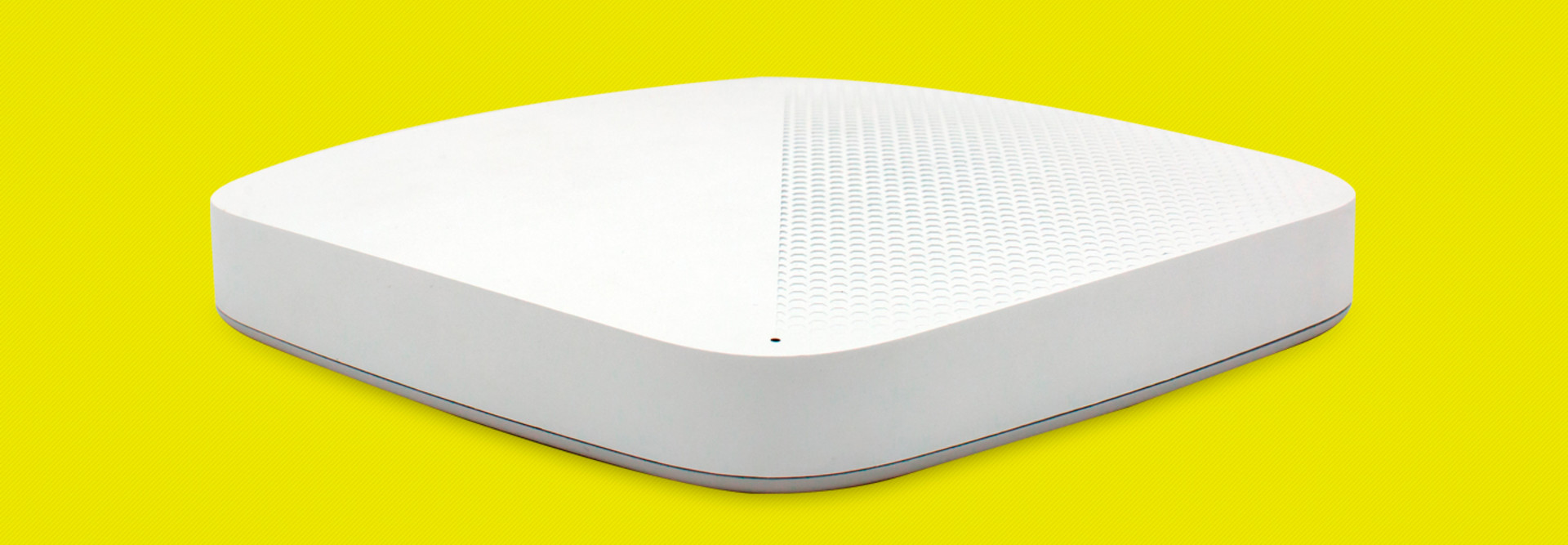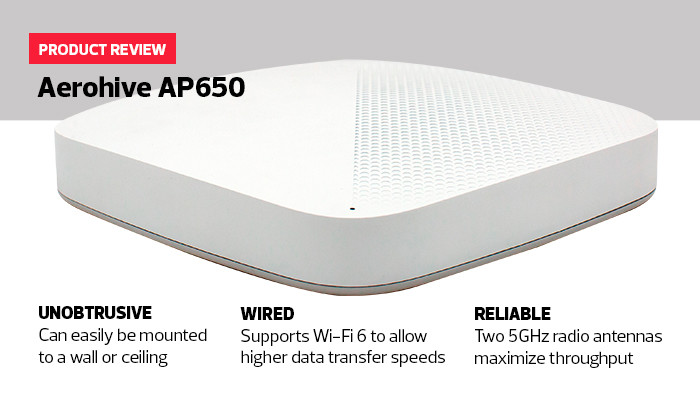Configuring and maintaining a large wireless infrastructure is never an easy task. While each access point could be configured separately, it’s a painstaking process when an administrator is managing dozens — if not hundreds — of access points. And without a centralized controller, how are the access points managed?
A solution can be found via design, management and reporting software known as ExtremeCloud IQ. This Software as a Service product, which works with the Aerohive AP650, comes in two flavors: Connect, which provides a basic level of support to access points; and Select, which is a subscription-based platform for the management of many access points.
The cooperative-control peer-to-peer network, based in the access points themselves, already allows the devices to distribute workload and manage moment-to-moment tasks. But ExtremeCloud IQ allows administrators to design the network topology, configure many devices at once, report on the health of the environment and gain clues on how to improve the environment’s performance.
READ MORE: Network management tools help providers head off bottlenecks.
Several tabs across the web application will be familiar to most administrators, including prompts to onboard new devices, design and distribute configuration parameters for access points, and manage the network. The Network 360 Plan function, for instance, allows administrators to upload physical floor plans and place access points on them to gain a physical understanding of how the network fits together.
Administrators may view seven distinct scorecards that leverage machine learning algorithms to provide detailed insight into a wireless network. Each of these scorecards — devices, services and security among them — can be broken down further by individual access point, or even down to the client itself.
Another powerful function is Client 360. Here, administrators can drill down to individual clients and examine their performance — especially useful for a health professional who’s always complaining that his or her mobile device is too slow. The received signal strength indicator is a measure of how well a client can hear a signal from the AP650 access points. Users can even view a physical “trail” of how the client traversed the network: which access point served it and where, and how the strength indicator changed as the client moved.
Further, it allows organizations to compare their network performance with other customers’ ExtremeCloud IQ experiences through comparative analytics. Shared anonymously, the data can help reveal best practices that might be leveraged in order to improve a wireless network infrastructure.
SPECIFICATIONS
WIRELESS PROTOCOLS: 802.11ac, 802.11ax
WI-FI BANDS: Two 5GHz radios
CONNECTIVITY: USB, Bluetooth
BACKUP: Redundant Power over Ethernet capable
DIMENSIONS: 8.9x8.9x1.8 inches
WEIGHT: 2.6 pounds











